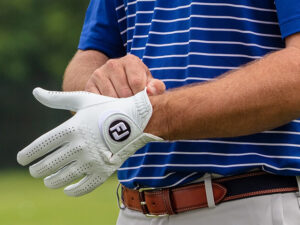Golfers are always looking for tools that make the game just a little easier, and that is exactly how the rescue club earned its name. If you have ever struggled with hitting long irons or found yourself in the rough with no clear shot, a rescue club can feel like, well, a rescue. But what is a rescue club in golf, and why do so many players swear by it?
Simply put, a rescue club in golf, often called a hybrid, is designed to combine the distance of a fairway wood with the control of an iron. It is forgiving, versatile, and built to help golfers get out of tricky lies while still keeping distance on their side.
What Is a Rescue Club in Golf?
A rescue club golf is essentially another term for a hybrid golf club. The term “rescue” became popular in the early 2000s when TaylorMade introduced their Rescue line of hybrids, branding them as the club that could rescue you from tough spots.
Unlike traditional long irons, which require precision and power, a rescue club has a wider sole and lower center of gravity. This makes it easier to launch the ball high, even from rough or uneven lies.
Think of it like this: if a long iron feels like trying to hit a baseball with a broomstick, a rescue club feels more like swinging with a lightweight aluminum bat. It is faster, easier, and far more forgiving.
A Brief History of Rescue Clubs
The concept of blending irons and woods is not entirely new. For decades, golfers experimented with specialty clubs to replace long irons. But it was not until the late 1990s and early 2000s that hybrids, marketed as rescue clubs, really took off.
TaylorMade’s Rescue line changed the perception of hybrids. Suddenly, professional golfers were putting them in their bags, and amateurs followed quickly. The design proved to be more than just a gimmick. It solved a real problem: long irons are notoriously hard to hit, especially for recreational golfers.
Today, nearly every equipment brand makes hybrids, and they are considered an essential part of a modern golf bag.
Rescue Golf Club vs Hybrid: Are They the Same?
One question golfers often ask is, rescue golf club vs hybrid, what is the difference?
The answer: there really is not much of one. Rescue was originally a brand name, while hybrid is the generic term. Over time, the words have become interchangeable.
That said, some players still make small distinctions. Rescue clubs are often thought of as slightly more iron-like, while some hybrids look and feel more like fairway woods. In reality, both serve the same purpose: replacing long irons with a club that is easier to hit, more forgiving, and versatile.
Rescue Club vs Fairway Woods and Long Irons
To understand the value of a rescue club, it helps to compare it directly to the clubs it often replaces.
- Long Irons (3- and 4-iron): These are hard to hit consistently, require high swing speed, and tend to produce low ball flights. A rescue club is easier to launch and more forgiving.
- Fairway Woods (5-wood, 7-wood): Woods produce more distance but are harder to control on tight lies or in rough. A hybrid offers more accuracy and flexibility, especially from difficult lies.
In short, if long irons are too demanding and fairway woods are too bulky for certain shots, the rescue club fills that gap perfectly.
What Is a Hybrid Golf Club Used For?
If you are wondering what is hybrid golf club used for, the answer is versatility.
Hybrids or rescue clubs can replace the more difficult-to-hit long irons. They are excellent for:
- Long Approach Shots: Hybrids launch higher and land softer than long irons, making them perfect for attacking greens from 180 to 220 yards.
- Escaping the Rough: The wide sole glides through thick grass better than a sharp-edged iron.
- Tee Shots on Tight Holes: When accuracy matters more than distance, hybrids are a safer option than drivers.
- Fairway Bunkers: Their low center of gravity helps lift the ball cleanly out of sand.
For the average golfer, a hybrid is one of the most valuable clubs in the bag.
When to Use Hybrid Golf Clubs
Knowing when to use hybrid golf clubs can give you a major edge on the course. Here are a few situations where they shine:
- Long Par 3s: Hybrids are easier to control than fairway woods for precise tee shots.
- Second Shots on Par 5s: Need distance but also height to hold the green? That is a hybrid’s specialty.
- Trouble Shots: Stuck in light rough or a tight lie? A hybrid is far more forgiving than an iron.
- Layup Shots: Perfect for laying up to a comfortable wedge distance without risking too much roll.
Many golfers say once they add a hybrid, they rarely go back to hitting long irons.
Real-World Examples of Hybrids in Play
Professional golfers use hybrids to shape shots under pressure. For instance, hybrids are often seen in majors when players need reliable ball flight on long par 3s. On the other hand, recreational players might use a hybrid to replace the dreaded 3-iron they can never quite strike cleanly.
One of my students, a mid-handicap golfer, swapped his 4-iron for a 22-degree hybrid. Within weeks, his approach shots became higher, softer, and more consistent. He calls it his “par saver.” Stories like this are common because hybrids are designed to solve real-world problems on the course.
Is a Chipper a Legal Golf Club?
While talking about unique clubs, many golfers ask: is a chipper a legal golf club?
Yes, a chipper golf club is legal under USGA rules, provided it is designed like a putter with loft, usually 30 to 37 degrees, and conforms to equipment standards.
A chipper is useful for short bump-and-run shots around the green. It is not the same as a rescue club, but both are designed to make tough shots easier for the average player.
Choosing the Right Rescue Club for Your Bag
If you are considering adding a rescue club to your bag, here are key factors to think about:
- Loft Options: Hybrids are available from about 16 degrees to 28 degrees, replacing anything from a 2-iron to a 6-iron.
- Shaft Flex: Match the shaft flex to your swing speed for maximum distance and control.
- Head Design: Some hybrids look more like woods, others like irons. Choose what inspires confidence at address.
- Forgiveness Levels: Larger heads provide more forgiveness, while smaller heads allow more shot shaping.
- Get Fitted: Remember the importance of proper fitting. This ties back to the earlier discussion of should I get fitted for golf clubs. A custom fit ensures the club matches your swing and fills distance gaps correctly.
Why Every Golfer Should Consider a Rescue Club
So why should you add a rescue club to your bag? Here is the bottom line:
- Forgiveness: Easier to hit than long irons.
- Versatility: Works from tee, fairway, rough, and even bunkers.
- Confidence: Gives average golfers the confidence to attempt shots they would avoid with a long iron.
- Consistency: Produces more reliable distance and ball flight.
It is not about replacing every iron in your set. It is about filling the gaps with a club that works in more situations than most.
Conclusion
So, what is a rescue club in golf? Simply put, it is another name for a hybrid, a club that blends the best of irons and woods to give golfers a more forgiving, versatile option.
Whether you are escaping the rough, attacking a long par 3, or laying up safely, a rescue club gives you options that traditional irons cannot. And with today’s technology, even high-handicappers can launch consistent, high-flying shots.
If you have not tried one yet, consider adding a rescue to your bag and make sure it is fitted properly. It might just become the club that rescues your round more often than not.












